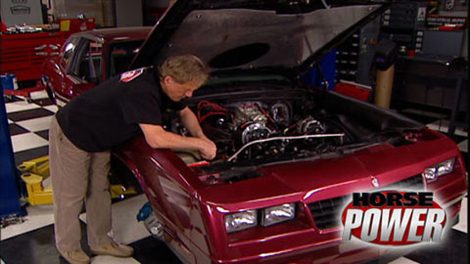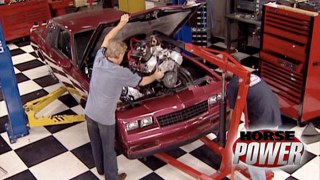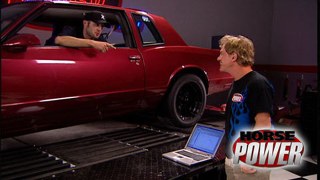More Monte Carlo Episodes
HorsePower Builds
Want more content like this?
Join the PowerNation Email NewsletterParts Used In This Episode
American Racing
17 x 8 American Racing Hopster, custom powder coated black finish.
ARP
ARP assembly lube, rod bolt stretch guage.
Bridgestone Firestone North American Tire, LLC
235/45r17 Bridgestone RE960 on the front, 255/50r17 Bridgestone RE960 on the rear.
CCI Driveline Engineering and Fabrication
Custom length driveshaft, TH-400 yoke, 1350 U-joint.
Chevrolet Performance
ZZ502/502 DELUXE.
Fidanza
Clutch assembly, throwout bearing, balanced, flywheel.
Flex-a-lite Automotive Division
56000l 26"core left side inlet.
Flowtech
3 inch exhaust tubing kit, Super 40 Muffler, stainless exhaust tips.
Hayden Auto
16" electric super duty high flow fan.
Holley
950 cfm double pumper.
Holley
Ceramic coated 2 inch primaries, 3.5 " collector.
Holley
HP fuel pump billet base gerotor design, fuel pressure regulator, fuel pressure safety switch, fuel pump relay kit.
Holley
pre-filter -8,fuel filter -8, 15 psi pressure guage, guage adaptor -6 to -6, -8 single feed fuel line, pipe to an fitting adaptors, Pro-Lite hose, -6 10ft. and -8 20 ft., weld-in adaptors for tank and bulkhead fittings with stat-o-seals.
Honest Charley
Manual transmission pedal conversion.
Honest Charley
Transmission cross-member for Richmond 5 speed overdrive.
Hotchkis
Rear control arms, coil springs shocks by Bilstein, sway bars and end links, tie rod sleeves, and hardware.
Lakewood Industries
Safety bellhousing, clutch fork, solid pilot bearing, safety plate, clutch fork boot, adjustable pivot ball, adjustable dowel pins.
Lokar
36" stainless throttle cable, throttle cable bracket.
Master Power Brakes
12 " front brake rotor upgrade with master cylinder and power booster.
Master Power Brakes
FORD 9 inch, 31 spline axels, 5x4.75 B/C, locker diff, 4.11 gear, 1/2 studs, rear disc brakes.
MSD Ignition
Lazer series guages, 2 5/8" oil pressure, 2 5/8" water temperature, 3 3/8" tachometer.
Richmond Gear
Five speed overdrive.
Summit Racing
Summit aluminum stage 1 intake manifold, remanufactured 750cfm quadrajet carburetor, Summit cam and lifter kit, hydraulic lifters, .282"lift/.465"duration, true roller timing set.

































